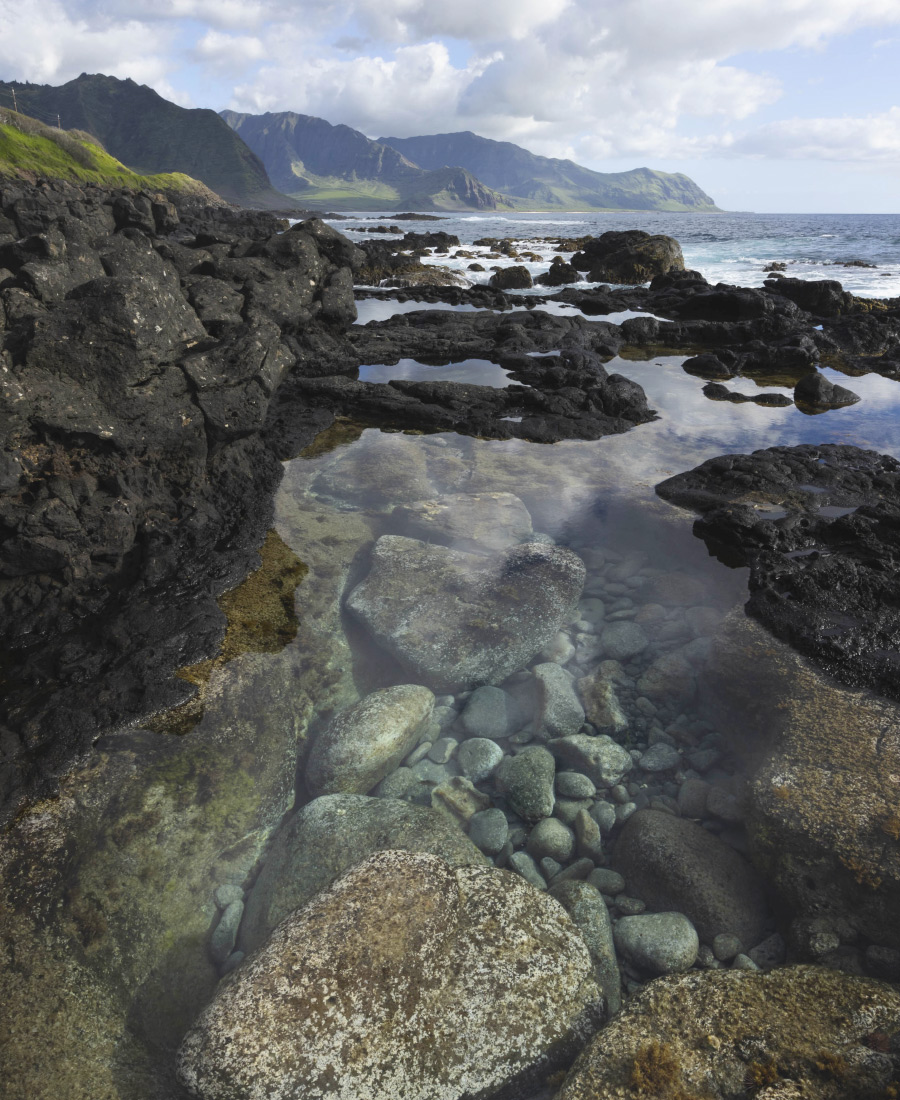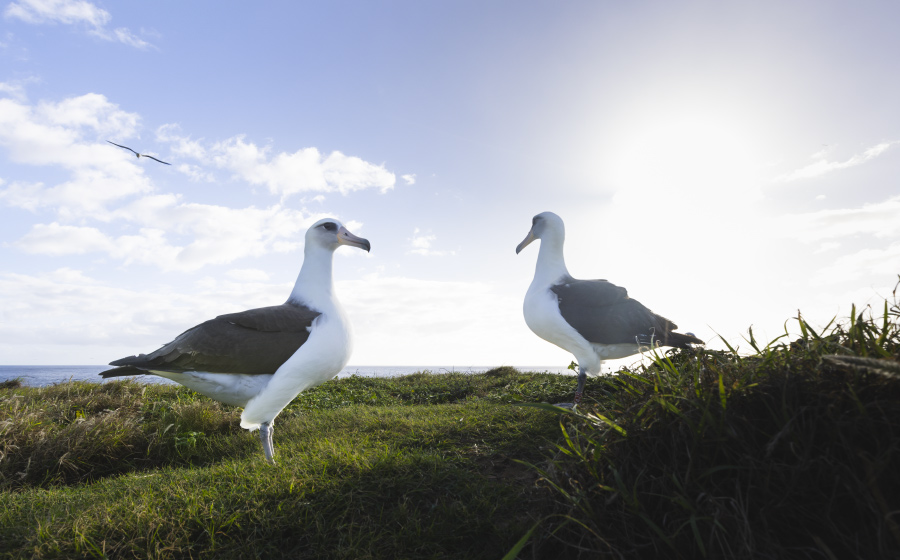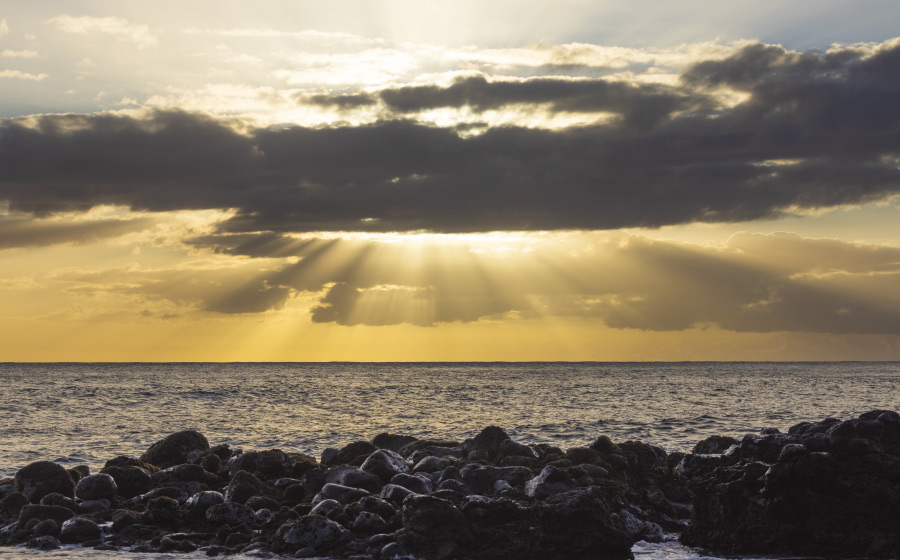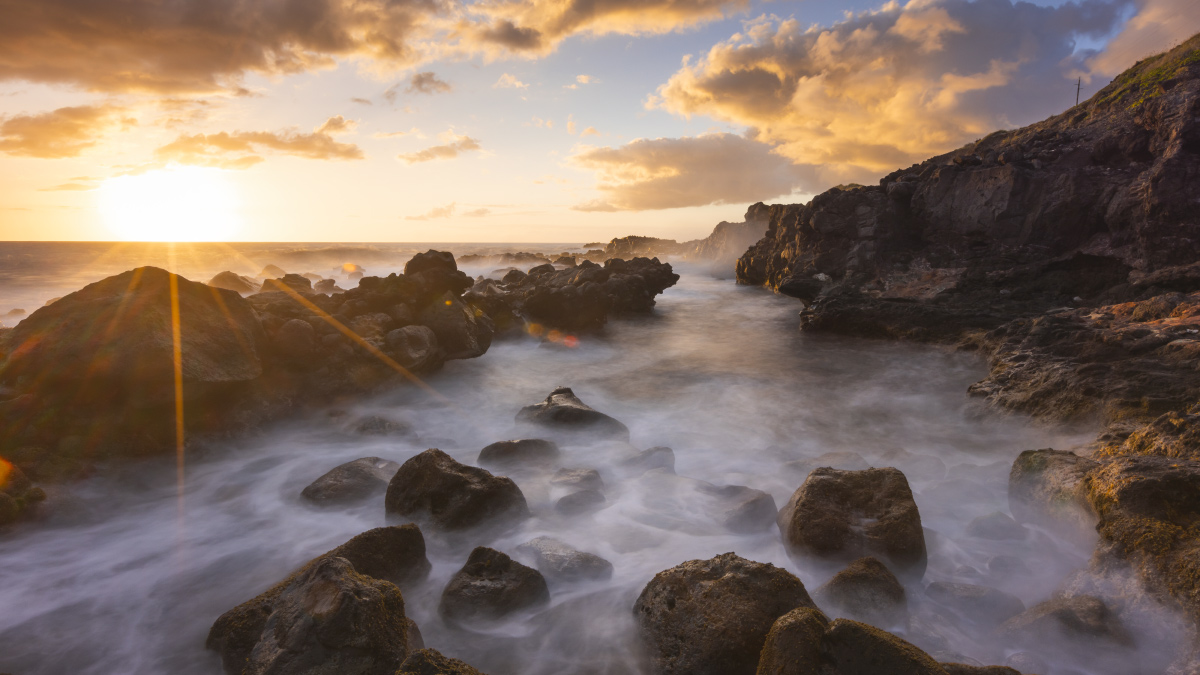The sun was beaming the day I met him. The boy made his way across my expanse of lava rock, his feet, wet from splashing in tidepools, cooling their sunbaked surfaces—the arid landscape never failing to live up to my name: Kaʻena, meaning “the heat.” The path I provided was sturdy and strong; it didn’t sink beneath the pressure of his weight like the surrounding coastal dunes. Though he struggled to plod his way across the calcareous sand, he loved to comb through it, seeking shiny shells and other treasures not yet broken up by the waves and current. In the winter, when the swells are large, the ocean pulls back from the shoreline, exposing crevices filled with gleaming cowrie and cone shells as big as the palm of his hand.

The boy grew. Over the following summers, he would bound along my path to fish alongside his father, who carried with him hooks, lures, nets, and baskets that adorned his shoulders like a cape. Setting up camp near one of the many ko‘a, or fishing shrines, that dotted the area, the boy’s father would cast his line high into the air, his favorite hook—a cream-colored lure fashioned from bone and the pearly shells of oysters—always seeming to land in the perfect spot. Soon they’d pull something up—silvery papio or red-hued kūmū—the first of which was always offered at the ko‘a to ensure a rich bounty. The boy’s father would often scan the sky, tracking the movements of soaring mōlī or ‘ua‘u kani that circled the water in search of fish. “One day, I will make the leap from this leina a ka‘uhane, this leaping place of souls,” the boy’s father once told him. “You will teach your family all that I have taught you.”

Some years later, the boy and his father walked along my path at dusk, a solemn procession of men following behind them. The boy was to celebrate ho‘okanaka, the passage from adolescence into adulthood. “Hā, hē, hū, koa (courage),” the men chanted, as the boy dove into the darkening sea. Missing from view for what felt an eternity, the boy suddenly emerged, wresting a great manō, a giant shark, onto the land. As he collapsed to the ground, I could feel the thrum of the boy’s body, the mana of this extradordinary feat electrifying the air and everyone around him. Here, at the island’s most westernmost point, the father told the boy, “He ali‘i ka ‘āina, he kauwā ke kanaka. The land is a chief, and man is its servant. Just as the land takes care of us, we have to take care of the land.”
Over time, the boy took on his own family. First, a wahine; then three keiki. Just as his father had shown him, the boy taught his children the ways of land and sea, how to craft strong lures, how to study the patterns of birds and fish. His father, whose skin crinkled like kapa over the years of fishing beneath the glaring sun, accompanied the boy and his young family season after season, until one day, the boy came alone.

He trembled as he walked along my path to the shoreline, his hand clenched tightly into a fist. As he clutched his father’s prized lure to his chest, I saw the depth of his grief for the loss of the family’s patriarch, his heartache for the man who taught him everything he knew. He knelt down to rest his hands on my surface. And then I realized what he realized: I am the land upon which he had walked his entire life; the land from which his father leapt into eternal night; the land that connects the footsteps of the past with the pathways to the future. The boy looked out to the horizon and then closed his eyes, hurling the lure as far as he could.
Located on the most northwestern tip of Oʻahu, the raw, rugged beauty of Kaʻena is accessible through on-foot hiking at Kaʻena Point State Park. In Hawaiian lore, Kaʻena Point is known as the “jumpingoff” point for souls departing the earthly world.
To learn more about the area, visit dlnr.hawaii.gov
